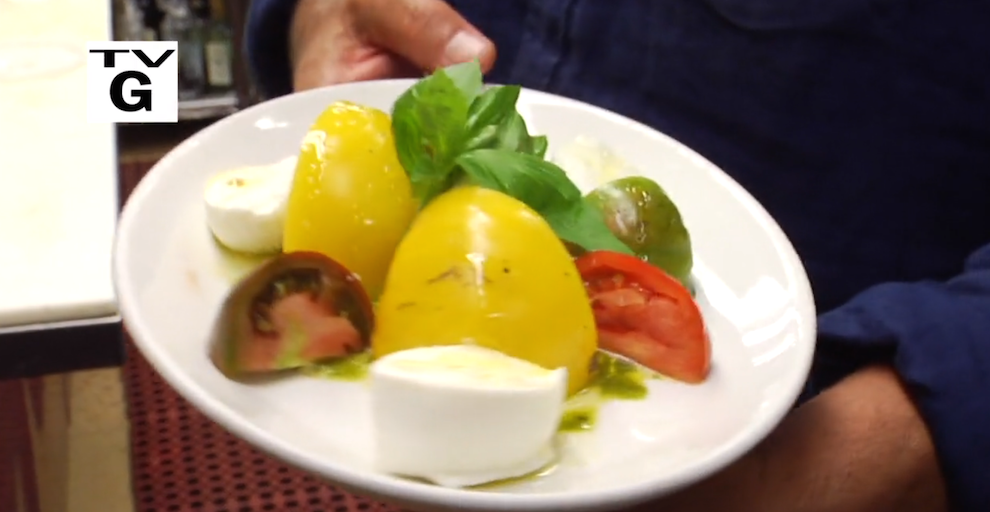Tune-in GHL 7:30AM + 1:30PM Tuesdays and Thursdays on Create TV
Color plays an important part in the appeal of creating recipes, menu planning and presentation. I taught my students years ago the importance of visual appeal in cooking - it can be the first impression encountered with a plate, if you don't catch its aroma first. Critical with food prepared on TV, since there's no smell-a-vision. The finished dish better appear tasty for the eye. Today, it would be called "style" or "design" of a plate. I even titled a recent GHL TV episode, Food is Art!
I don't believe in over complicating a dish for presentation, but there are some basics. How exciting would an all-white menu be? Such as, poached fillet of sole, cauliflower, and steamed rice? You get the drift here. A much more eye pleasing and appealing color combo (not to mention flavor) would be tomato and mozzarella plate as above. A salad with steamed asparagus, a charred sliced steak, and served with colorful mixed berries with a golden marsala sabayon. Agree?
Which brings me to summer foods - a very exciting time to liven-up a menu with the bounty of colors from the garden. Today let's look at the color red in foods starting with Bruschetta.
I am not talking about artificial coloring. Red fruits and vegetables are colored by natural plant pigments called "lycopene" or "anthocyanins." Lycopene in fresh garden tomatoes, a chilled watermelon and pink grapefruit, for example, may help reduce risk of several types of cancer, especially prostate cancer. Lycopene in foods containing cooked tomatoes, such as spaghetti sauce, and a small amount of fat are absorbed better than lycopene from raw tomatoes.
Anthocyanins in fresh strawberries churned into homemade ice cream, raspberries, red grapes and other fruits and vegetables act as powerful antioxidants that protect cells from damage. Antioxidants are linked with keeping our hearts healthy, too.
(health ref; ndsu.edu)




